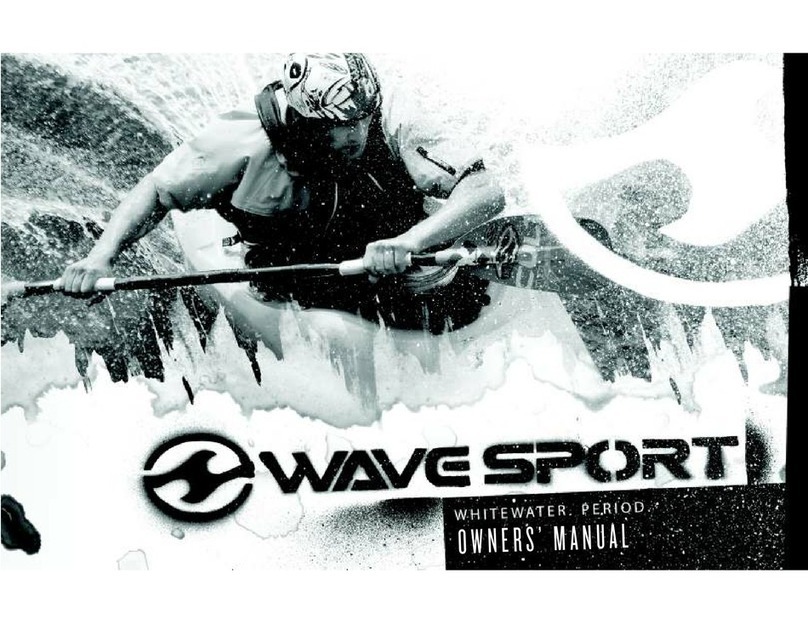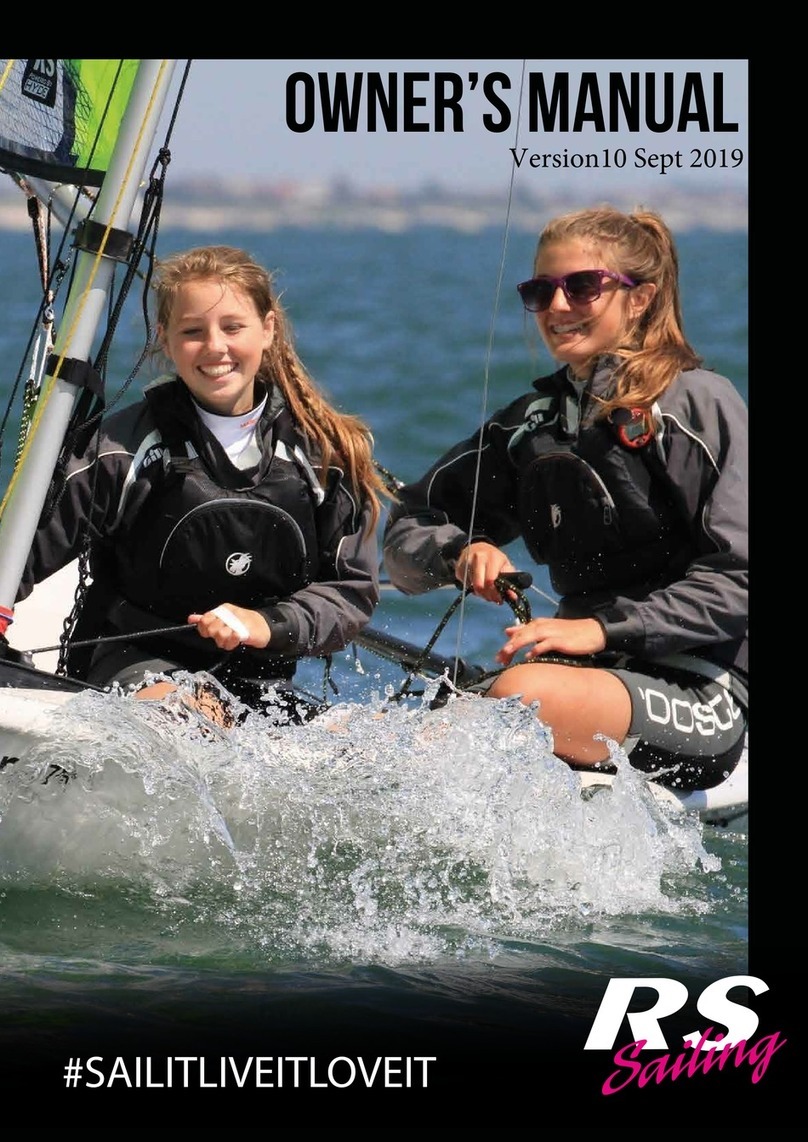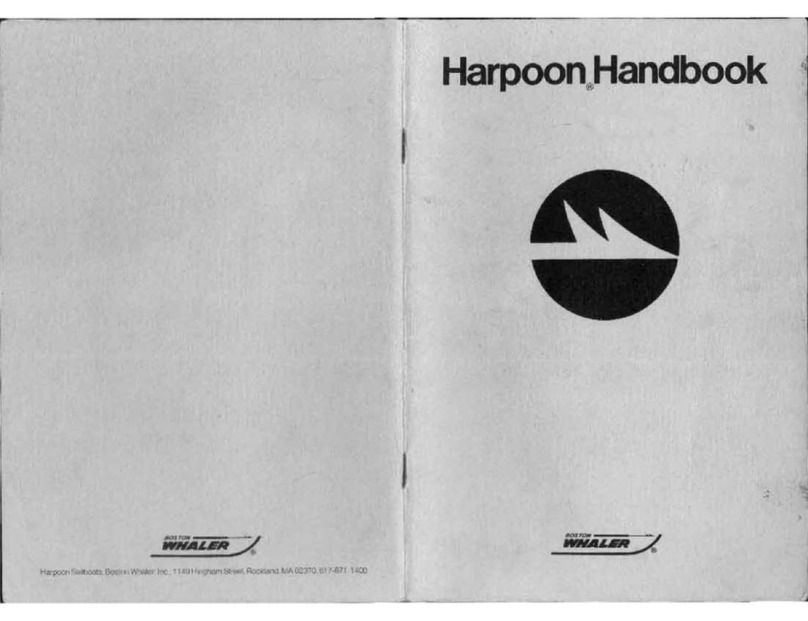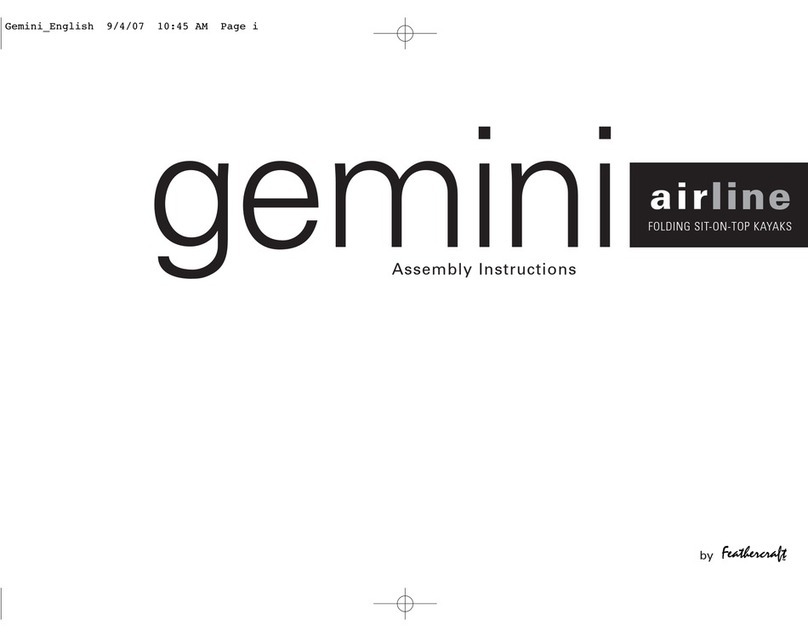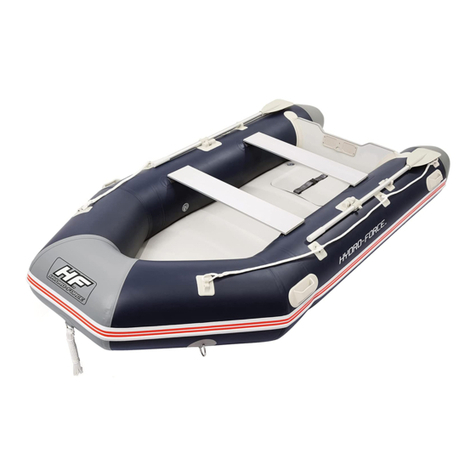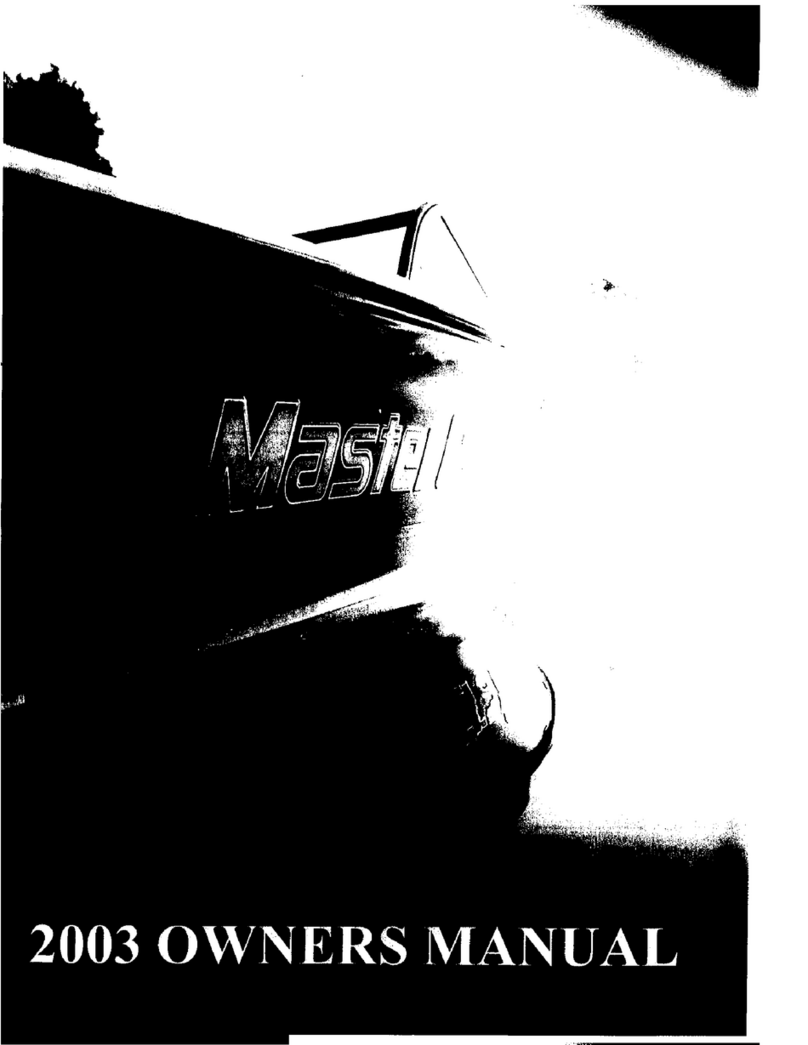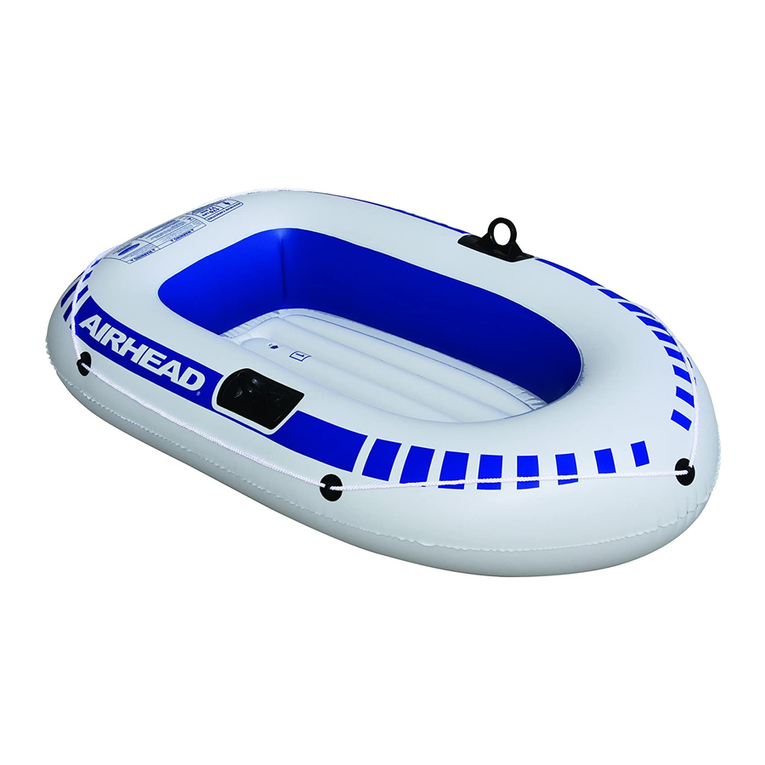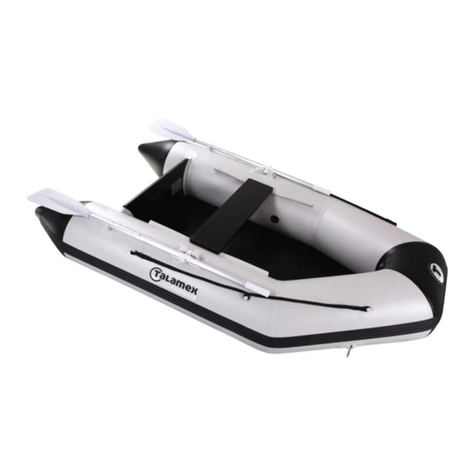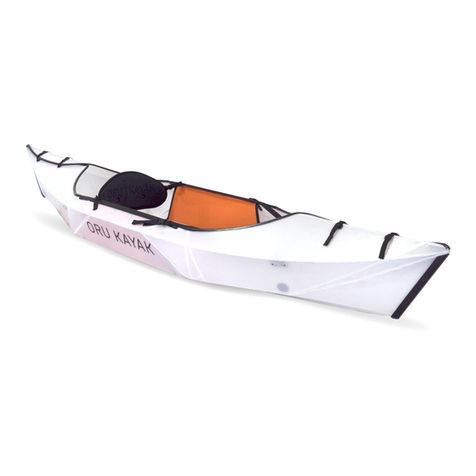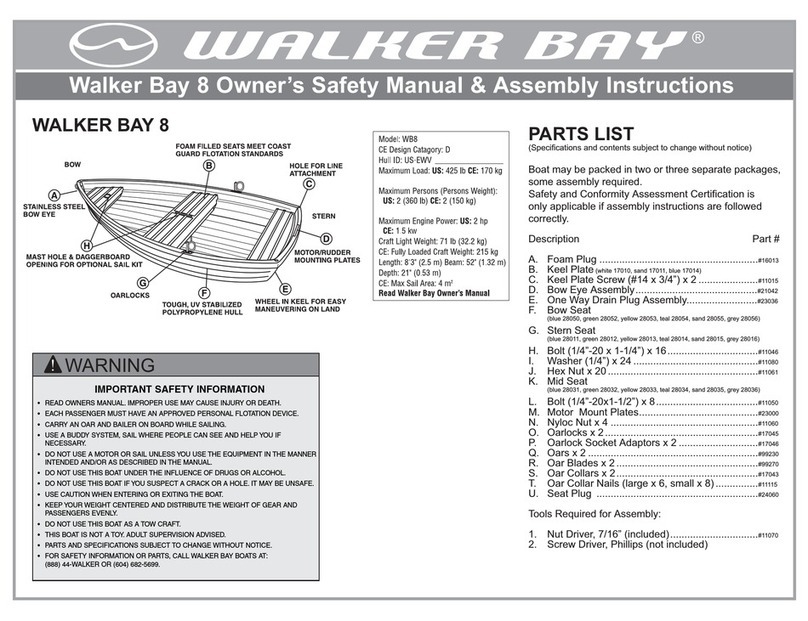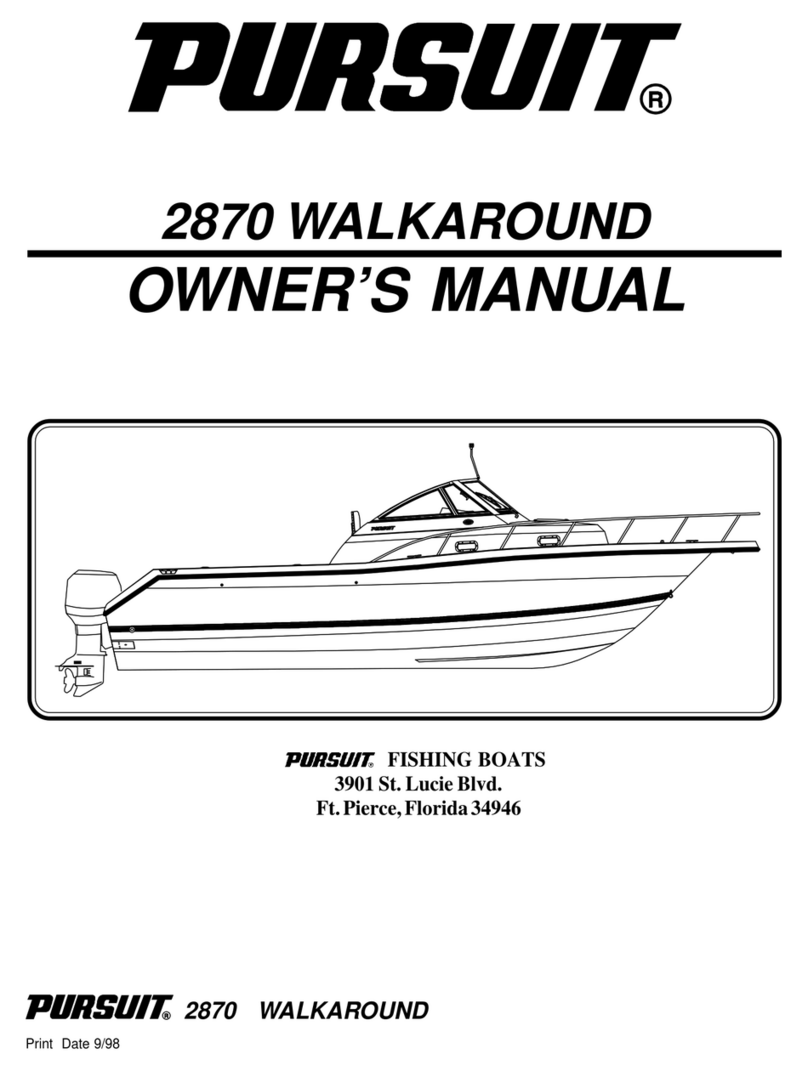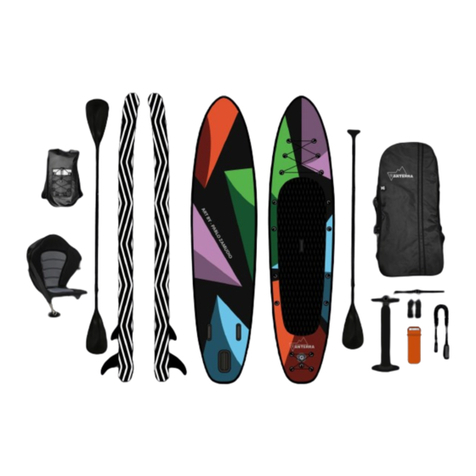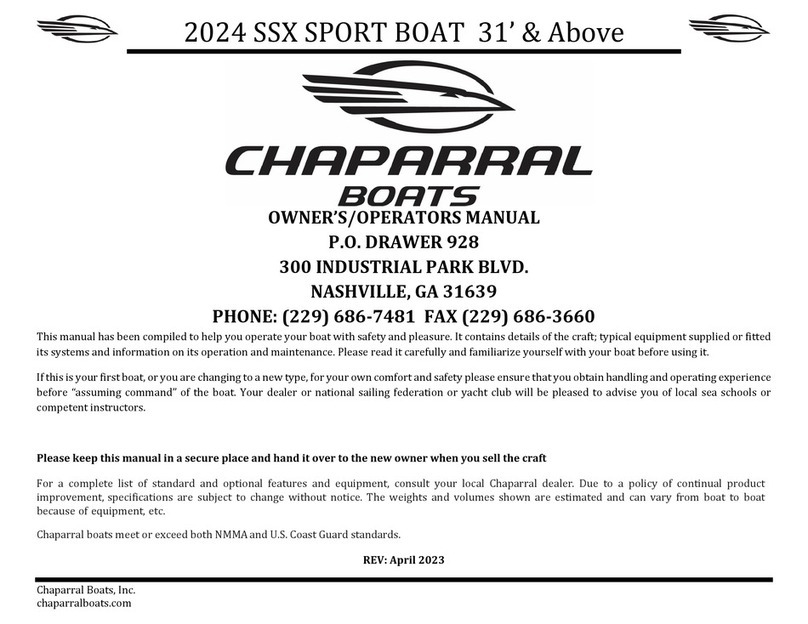ROCKSIDE VULCAIN V335 User manual

1
USER GUIDE
ROCKSIDE INFLATABLE KAYAK
VULCAIN V335 / VS335 SUPERCHARGED
GRAND VOYAGER GV410 / GVS410 SUPERCHARGED
Version EN

2
TABLE OF CONTENTS
1. General information 3
2. Usage 4
3. Technical specifications 4
4. Builder’s plate 5
5. Fin setup 6
6. Inflation 7
7. Seats setup 10
8. Drain system 11
9. Deflation 11
10. Folding 12
11. Storage 13
12. Repairs 13
13. Warranty 14

3
1. GENERAL INFORMATION ON INFLATABLE CANOE-
KAYAK PRACTICE
This manual is designed to help you use your inflatable canoe kayak in the best and
safest conditions. It contains information about the boat. We recommend that you read
the user guide carefully and familiarize yourself with the product before using it.
Before launching your inflatable canoe or kayak, it is best to check the weather forecast
and make sure that the conditions suit the recommended use of your inflatable canoe or
kayak.
Please do not consider this manual as a maintenance or repair tool. In case of difficulty, it
is necessary to refer to the safety features of the boat to competent professionals. Also,
the manufacturer disclaims all responsibility for any modifications made to the product
that are not approved by the manufacturer.
Any canoe kayak can be damaged by misuse. Passenger safety can also be compromised.
Please always adjust your speed and the direction of the kayak according to your
environment.
While using your canoe kayak, it is strongly recommended that you wear buoyancy aids
(life jackets or buoyancy aids). In some countries, these tools may be mandatory (legal
requirement).
Please refer to the regulations in force in the country of use of the inflatable canoe kayak.
Congratulations on your purchase of a Rockside brand product. Rockside looks forward
to providing you with quality products. This one represents an investment: it deserves
all your attention and requires some care.
The purpose of this manual is to provide you with some tips on the use, care, and storage
of your kayak so that you can enjoy and use it safely. Please read carefully, especially the
sections framed and entitled "CAUTION" and "WARNING". For your safety, follow the
instructions and familiarize yourself with your inflatable product before using it.
CAUTION!
It is the responsibility of the product owner to ensure that all users read the manual
carefully and follow the safety instructions in it. Comply with local and national
regulations. Always wear an approved life jacket. Also observe the information on the
nameplate printed on the product.
CAUTION!
Warns of a hazard that, if not followed, may result in serious
injury.
WARNING!
Recalls safety precautions or warns against practices that
may result in injury or damage to the product.

4
2. USAGE
BEWARE OF WINDS AND CURRENTS!
Be aware of local regulations and hazards related to this sport and water
activities.
Check with local authorities about your sailing area, tides and currents.
Don't make assumptions about your strength, stamina or skills.
Never underestimate the forces of nature.
Never exceed the permitted number of persons on board or the maximum load.
Avoid contact of the air bladders with sharp objects and corrosive liquids (e.g.
acid).
This product comes with a carrying bag. Keep it out of reach of children: danger
of suffocation!
3. TECHNICAL SPECIFICATIONS
Model
Weight
Max.
Load
capacity
Air pressure
of side tubes
Air pressure of
bottom floor
tube
V335
12.8 kg
200 kg
440 lbs
0.1 bar
1.45 psi
0.1 bar
1.45 psi
GV410
25.4 kg
250 kg
550 lbs
0.1 bar
1.45 psi
0.1 bar
1.45 psi
VS335
12.8 kg
200 kg
440 lbs
0.1 bar
1.45 psi
0.48 bar
7.00 psi
GVS410
16.8 kg
250 kg
550 lbs
0.1 bar
1.45 psi
0.48 bar
7.00 psi

5
4. BUILDER’S PLATE
Air
compressor
forbidden
Max. air
pressure
Serial number
Max. load
capacity
Inflation
sequence
Number of
people

6
5. FIN SETUP
Choose a smooth and clean surface to unfold your kayak.
The use of the fin is recommended for use in deep water (lake, sea...) where it keeps the
kayak in a straight line. It is not recommended to install the fin for a practice in shallow
water or river. The use of the fin in shallow water may cause the loss of the fin.
For its installation and dismantling do this while the kayak is deflated.
Step 1: Attach the first hook towards the front of
the kayak.
Step 2: Pull the fin back.
This can be difficult. To help you, try folding the
kayak's canvas under the fin to reduce the
distance between the attachment points.
Step 3: Attach the rear hook in its holder.
It is finished.
Once the floor is inflated, it will be more difficult
to remove it. Remember to deflate it to remove it.

7
6. INFLATION
WARNING!
Do not use a sharp tool! The use of a compressor would seriously damage your product.
This is a case of exclusion of warranty.
To familiarize yourself with your product during the first inflation, inflate it in a room at
room temperature (approx. 20°C). This will make the PVC flexible and facilitate
assembly. If the product has been stored at a temperature below 0°C, place it in a room at
20°C for about 12 hours before unfolding it.
Inflate it with a Rockside pump or any other pump designed to inflate boats, pool items,
beds, camping mattresses or other low pressure inflatables.
Your product can be equipped with 2 types of valves:
1: Boston Valve(s):
Unscrew the valve cap, screw the valve insert onto its base and check that the valve cap
stays accessible.
Insert the pump hose end piece and inflate it until you will reach the required pressure.
After inflation tighten the valve cap (clockwise). A slight air-leak before screwing the
valve cap is normal. Only the valve cap can ensure final AIR TIGHTNESS.
2: High pressure valve(s) (supercharged bottom floor version):
Remove the valve cap and make sure the center pin is in the up
position. Press it with your thumb and turn it counter-clockwise.
Connect the pump hose to the pump handle.
Insert the other end of the hose into the bladder valve.
Turn clockwise until it locks (about a quarter turn).
3. Inflate the product in the following order (also indicated on the builder’s plate
printed on the product):
Valve cap
Valve insert
Valve base

8
4: Inflate the side bladders: 5: Inflate the bottom floor:
Side
bladder
Bottom floor
Air pressure V335 & GV410:
1.45 psi (0.1 bar)
Air pressure Supercharged Version:
7.00 psi (0.48 bar)
Air pressure V335 & GV410:
1.45 psi (0.1 bar)
Air pressure Supercharged Version:
1.45 psi (0.1 bar)

9
Do not exceed the maximum operating pressure. Check the pressure with the
manometer supplied with your product.
Overpressure: Deflate until the recommended pressure level is reached.
Under pressure: re-inflate slightly.
WARNING!
If you leave your kayak exposed to the hot sun, check the pressure and deflate it slightly.
Otherwise, the kayak may become over inflated and stretch the material. The ambient
temperature affects the tube’s internal pressure: a variation of 1°C/1.8°F causes a
variation of the pressure in the tube of +/- 4 mBar (0.06 PSI).

10
7. SEAT(S) SETUP
The seat is held in place by the velcro strips on the underside and by webbing straps on
the sides of the backrest. Place the seat(s) into the kayak, matching the position of the
Velcro strips on the floor.
Attach the webbing straps from the sides of the backrest to the D-rings located inside the
kayak, on the side walls/chambers. Tighten the straps as needed for proper back
support. You can choose the seat position for one or two persons.
Setup example:
2 seats setup
1 seat setup
Webbing straps setup

11
8. DRAIN SYSTEM
Your kayak has been designed with a drain system located on the underside of the kayak
in the rear. It consists of a fixed base and a screwable cap. It enables to easily drain the
water from the kayak once your ride is over.
Screw the cap closed before putting the kayak into the water. It is not a self-draining
hole. If the cap is open, water will leak inside the kayak.
9. DEFLATION
After rinsing your kayak with clean water, open the drain cap to let the water out.
To deflate the kayak, remove the valve cap from the valves in the side bladders first and
kayak floor second.
Clean and check the kayak as well as all the accessories.
Make sure that no sand nor gravel remains inside the kayak nor between the hull and the
inner chambers: this could result in abrasion or even punctures while storing the kayak.
Use soapy water, no detergents or silicone-based products. Make sure the kayak is
completely dry before putting it away.

12
10. FOLDING
1- Fold the 2 sides into the middle:
2- Roll it up from the opposite end of the valves (so remaining air can escape from the
valves). Repeat the procedure if you notice remaining air in the bladders.

13
11. STORAGE
When storing your inflatable kayak, keep it in a clean and dry place that is unaffected by
significant temperature variations or other damaging factors. You can store it deflated
and folded in its bag, or setup and slightly inflated.
Keep it away from rodents: they could put holes in the kayak tubes.
WARNING!
Whenever you take your kayak out of the water and deflate it, allow time for it to air out
and dry. Neither the skin/hull or the inside chambers will suffer from water damage, but
stagnant water could cause mildew and foul odor. Open the zippers to evacuate water
and allow the different elements to dry out.
12. HOW TO REPAIR SMALL PUNCTURES
You can repair small punctures using the material provided in your repair kit (Note: glue
is not supplied with models intended for the U.S.A.). To carry out a repair in optimal
conditions, the hygrometric degree must be less than 60% and the temperature must be
between 18°C / 25°C. Avoid repairing in rain or sunlight.
To remove a tube, open the zipper on the cover inside the canoe/kayak. Each tube has a
zipper at the front and rear for quick and easy access. Check that the inner tube is
completely deflated and laid flat.
1- Prepare a round patch and cut it with no less than 2 inches or 5 centimeters in
diameter excessing the area where the patch is to be applied. You can draw the shape of
the patch on the tube where the leak is to be repaired.
2- Clean the patch and the area surrounding the leak with Alcohol.
Let it dry about 5 min.
3- Apply 3 thin, even coats of repair kit adhesive to both the surface of the kayak and the
patch. Wait 5 minutes between each coat.
4- After the 3rd coat, apply the patch on the defect surface. Use a hand roller to apply the
patch evenly. Pay special attention to the edges. Clean the excess glue with a solvent.
Wait 12 hours for it to dry out.

14
WARNING!
• Perform all of your repairs in a well-
ventilated area.
• Avoid inhaling and ingesting glue vapors.
• Avoid contact with the skin or the eyes.
• Keep all repair materials (glue, solvents, etc.)
away from the reach of children.
N.B.: Repairs on seams/welds must not be glued. Only the manufacturer of the kayak can
perform such repairs.
13. WARRANTY
This item warrants (legal warranty –check with Rockside for details on the length of this
warranty) to the original purchaser only, and from date of purchase, that the product is
free from defects. The warranty applies only when this product is used for normal
recreational purposes. The warranty does not cover any puncture, cut or abrasion
sustained in normal use or damage from unreasonable uses or improper storage.
If any product is found to be defective, the owner may return it to the store where it was
purchased along the original sales receipt. After inspection of any product found
defective, Rockside shall either repair or replace the defective part or item as deemed
necessary by Rockside. Rockside shall not be held liable for incidental and consequential
damages.
There are no warranties which extend beyond the description of the face hereof. This
warranty is in lieu of all other warranties. This warranty gives you specific legal rights
and you may also have other rights, which may vary, from country to country.
The main limitations to the application of this warranty are the following;
•The item must not be modified and/or fitted with a motor in excess of that allowed by
the manufacturer or used in any activities outside normal recreational use (such as races,
rental, or commercial usage).
• Used in excess of the manufacturers recommended maximum load capacity.
• Pressure recommendations, assembly / disassembly and handling procedures must be
strictly observed.
• The maintenance and the storage procedures must not be neglected.
• This warranty does not cover parts and accessories not supplied or recommended by
the manufacturer or defects resulting from the installation of such equipment on their
products.
N.B. : All repairs covered by warranty must be performed by Rockside.
This manual suits for next models
3
Table of contents
